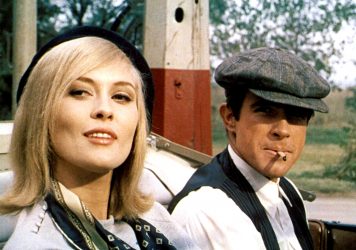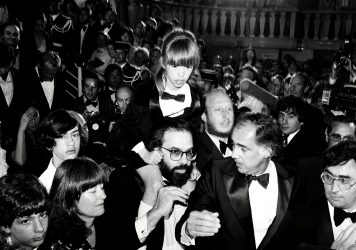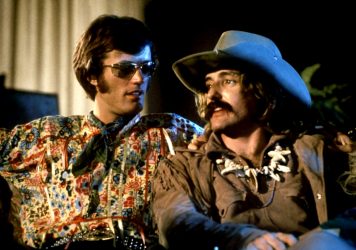
In 1967, Bonnie and Clyde lit the fuse for a Hollywood revolution, confounding the critical establishment, attracting droves of wide-eyed audiences who’d never seen anything like it, and altering the course of American cinema forever. The furore around the film was so intense, it more or less wiped director Arthur Penn’s previous film from the public consciousness. But for all the adjectives that could be used to describe 1966’s The Chase, ‘forgettable’ is not one of them.
Bubber Reeves (Robert Redford), a wrongfully imprisoned convict, is tempted into a jail break by a fellow prisoner. After their escape, that prisoner kills a person and drives away in their car, leaving Bubber to take the fall and making him a fugitive twice over. The citizens of his unnamed Texas hometown, with only a few exceptions, are a rowdy, drunken mob who bay for his blood; after hopping the wrong train, Bubber finds himself heading straight for them. His only hope for protection is the long-suffering Sheriff Calder (Marlon Brando), who never believed he was guilty in the first place.
The Chase is a big film, running at more than two hours and boasting a big-hitting cast. Beyond Brando and Redford, it stars Miriam Hopkins as Bubber’s despairing mother, Jane Fonda as his anxious wife (the first of four features Fonda and Redford would star in together over the next 40 years), EG Marshall as the town’s obscenely wealthy overlord, and Robert Duvall as his most obsequious employee.
It was released in the middle of a tumultuous decade, and Lillian Hellman’s screenplay (adapted from Horton Foote’s novel and play of the same name) dives headfirst into a phalanx of hot-button social issues – racism, wealth disparity, the sexual revolution, guns – often using the supporting cast as a kind of Greek chorus.
It’s melodramatic, overblown, sometimes downright hysterical. And yet that hysteria, though mocked in many contemporary reviews, which gives The Chase its queasy power. The townsfolk are portrayed rather like a caricature. Fiendish, almost zombie-like; you can’t reason with them, and they move in a big, homogenous pack. As the film progresses, their soullessness starts to feel nightmarish.
Trapped in this nightmare is Sheriff Calder, who in another actor’s hands could have been a tedious archetype, a grey wall of goodness facing off against a town of hedonistic villains. Brando, however, makes him a captivating presence. He’s never self-righteous. He doesn’t hide his disdain at the citizens under his jurisdiction, or try to show them the error of their ways. He knows they are way beyond that. A palpable sense of exhaustion radiates off of Brando, just as potent as the character’s fundamental decency.
“The passage of time hasn’t dimmed the brilliant power of Brando’s performance, or the film’s seething atmosphere.”
It was Brando who suggested to Penn how to shoot the beating Calder endures at the hands of the townsfolk. The actors’ punches would make contact but be executed slowly, and the film would then be sped up. It’s a deceptively simple idea, but the scene – which unfolds over three agonising minutes – remains frighteningly effective. Indeed, the viscerality of the attack contrasts the cartoonish villainy displayed by the townsfolk earlier in the film. Suddenly, the nightmare feels very real.
It’s this constant tussle between the abstract and the real, between Old and New Hollywood, that makes The Chase noteworthy. The film was shot largely on studio sets, and there’s an artificiality to some of the supporting performances – a mannered quality to the dialogue – that seems to belong to an earlier era. But the violence, both the simmering promise and the brutal realisation of it, foretold where cinema was heading.
Behind the scenes, The Chase was plagued by production issues. Things got so heated between Penn and legendary producer Sam Spiegel that the director was tricked out of the final edit. When it was eventually released the film performed poorly both critically and commercially. Then along came Bonnie and Clyde.
But the passage of time hasn’t dimmed the brilliant power of Brando’s performance, or the film’s seething atmosphere which still manages to burrow under your skin. With the dust from the firestorm started by Bonnie and Clyde having long since settled, The Chase survives today as a fascinating throwback, a time capsule of an industry teetering on the brink of something new.
Published 30 Sep 2022

Arthur Penn’s seminal crime thriller owes a lot to the likes of Jean-Luc Godard and François Truffaut.

Francis Ford Coppola caused an unprecedented stir when he unveiled his unfinished Vietnam opus in 1979.

By Lynsey Ford
Fifty years ago, Peter Fonda and Dennis Hopper birthed arguably the defining film of America’s counterculture era.